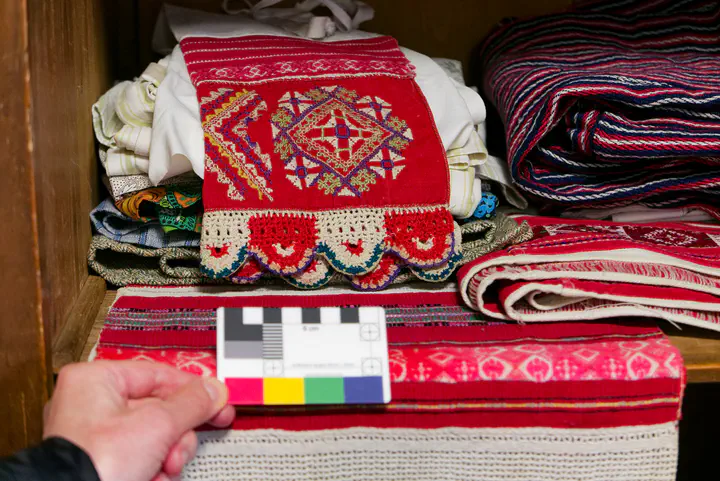TextileBase: Introduction
Federating Open Knowledge About Textiles & Dress History

We warmly invite colleagues, friends, and stakeholders interested in cultural heritage data, digital humanities, and AI-supported research to a light and lively summer seminar on three interconnected initiatives.
- Our main focus is on
TextileBase– our linked open data platform for dress history - We show a glimpse of our futuristic multi-modal, multi-language graph with data, images, music,
audiovisual
Finno-Ugric Data Sharing Space, as a way to connect clothing history into a broader regional knowledge platform. - And the
Wikimuseum conceptfor wider impact, co-curated collections and exhibitions.
This informal gathering is not about theoretical publications (although we’re happy to send you preprints!). It’s about showcasing how things actually work, especially when archival depth is shallow and data quality is mixed. There’s a big difference between writing about data integration in a computer lab — and actually building tools that work for researchers and cultural institutions across languages, countries, and platforms.
Topics For Discussion
Each speaker will present a short, live demo or walkthrough (10–12 minutes), followed by Q&A and a casual hybrid meet-up.
Daniel Antal: What is TextileBase? Connecting knowledge across museums, archives, libraries, repositories, Europeana, ECCCH, Wikidata.
Anna Márta Mester: Technical, but not Deep Dive: Using the Wikibase Suite, SPARQL endpoints, and Sampo-UI for comfortable scholarly research.
Ieva Pigozne: Use Case: From years to weeks — how Latgalian data curation paved the way for rapid digitisation of Seto and Livonian datasets. Sneak peek: Finno-Ugric clothing.
Kata Gábor: AI for Cultural Heritage: From multilingual NLP to image annotation and ontology enrichment in noisy or sparse data environments.
Asmah Federico: WikiMuseum: A vision for co-curated, multilingual virtual exhibitions with dispersed physical collections.
Wikibase Interfaces
, [Q180](https://reprexbase.eu/textilebase/Item:Q180), [Q179](https://reprexbase.eu/textilebase/Item:Q179), [Q181](https://reprexbase.eu/textilebase/Item:Q181).](/media/png/dataspace/textilebase/Textilebase_four_images_hud9c1ab3a1a107b842d90f84f6576b635_244654_c7d8e4451d5ce9ff2a6b3c6620e7010a.webp)
In machine-readable format: https://reprexbase.eu/textilebase/Special:EntityData/Q180.ttl
SPARQL Endpoint
We will place here a few sampe querries:
Sampo UI
We are going to unveil a similar interactive website on the webinar to the OperaSampo; TextileBase will run on Sampo, following dozens of successful digital humanities projects.